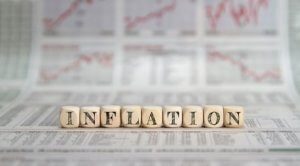 Investors should not be fooled. When companies eventually replace inventories or capital, their profits will decline, writes Jack Mintz in the Financial Post. Below is an excerpt from the article, which can be read in full here.
Investors should not be fooled. When companies eventually replace inventories or capital, their profits will decline, writes Jack Mintz in the Financial Post. Below is an excerpt from the article, which can be read in full here.
By Jack Mintz, October 21, 2021
As the Canadian economy rebounds, corporate earnings are reaching new highs — almost $400 billion a year, close to two-thirds higher than before the pandemic. As investors cheer, the TSX reaches 21,000, its highest level ever.
Along with this good news, however, comes a warning sign: inflation. The 4.4 per cent year-over-year rise in consumer prices has got all the headlines. But industrial prices are up 15 per cent and commodity prices 40 per cent. Not having seen numbers like that in a long time, many of us have forgotten an important inflation lesson: when prices are rising corporate earnings may be overstated.
Inflation means that when companies come to replace machines, inventories and structures they have to pay a lot more to replace them to stay in business. Suppose a business buys a machine that only lasts five years. With the pre-pandemic annual inflation of two per cent, the cost of replacing the worn-out equipment is ten per cent higher after five years. But if inflation is five per cent annually, it costs 28 per cent more to replace the machine in five years. That means depreciation costs will be 28 per cent higher than depreciation based on historical prices. Corporate profits don’t look nearly so rosy once we take that into account.
During the high-inflation 1970s and early 1980s, experts devised ways to correct corporate earnings for inflation. Asset values carried at historical prices were revised to replacement cost. Depreciation and depletion costs were revalued upwards to reflect higher capital good prices. Inventory costs based on their original acquisition cost were boosted to reflect current prices. Net financial income was adjusted downwards since inflation erodes the purchasing power of money loaned to others (though that helps non-financial companies, who are usually net borrowers and benefit as inflation eats away at the real value of their borrowing).
***TO READ THE FULL ARTICLE, VISIT THE FINANCIAL POST HERE***





